Do you want to know more about the common problems associated with Zoysia grass? Are you looking for solutions on how to care for this type of lawn? Here is some information that explains the most frequent issues related to Zoysia, as well as methods for improving its health and appearance. From nutrient deficiency symptoms and scalping, to lawn mowing tips and pest control advice, we offer an easy-to-follow workflow containing vital knowledge from expert horticulturists so you can tackle typical Zoysia problems today!
Table of Contents
What is Zoysia Grass?
Zoysia grass is originally from Southeast Asia and is a type of warm-season turfgrass. Because of its deep green color, fine texture, and superior wear tolerance, it is commonly used for lawns and golf courses. Zoysia grass requires little maintenance and can tolerate a wide range of soil types and pH levels. However, it is susceptible to various problems that can affect the health of the turf.
Types Of Zoysia Grasses
Zoysia grass is a warm-season turf grass that can be found throughout much of the United States. It is a popular choice for homeowners because it requires less maintenance than other grass types, has a high tolerance to drought and its thick texture helps to choke out weeds. There are several different species of Zoysia grass, including Meyer zoysia, Empire zoysia and Zenith zoysia.
Meyer zoysia is the most commonly used type of Zoysia because it grows quickly, forms an attractive lawn with dense coverage and isn’t bothered by excessive heat or cold temperatures. This makes it well suited for areas that experience harsh summers and colder winters, although it does need regular fertilization to stay healthy.
Empire zoysia is similar, but has a finer texture and can tolerate more shade than Meyer zoysia.
Zenith zoysia is the most cold tolerant of the three types, so it’s ideal for areas with colder climates.
No matter which type of Zoysia grass you’re using, it should be planted in full sun and given frequent waterings during periods of drought. To ensure a healthy lawn, keep an eye out for common Zoysia grass problems such as disease or insect infestations and take steps to remedy them quickly. With the right care and maintenance, your Zoysia grass will remain lush and green for years to come! [1]
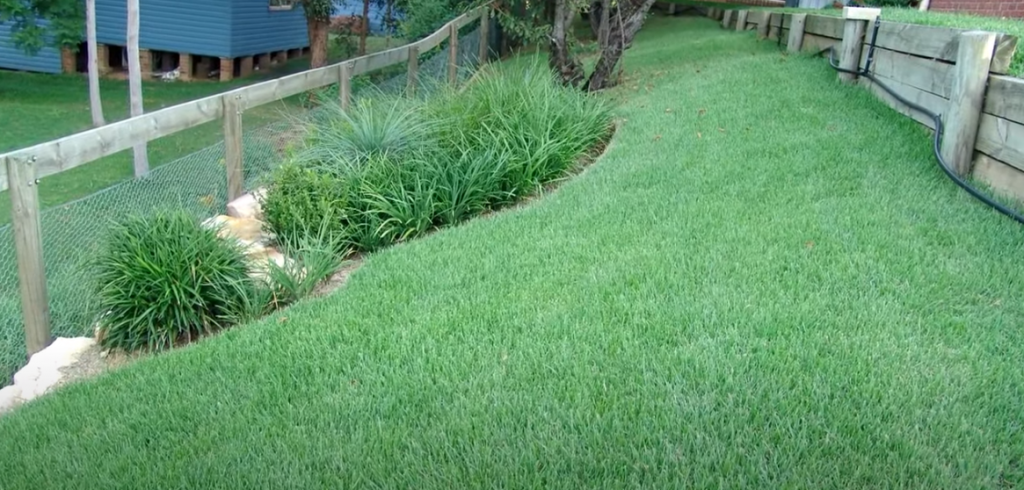
Common Zoysia Lawn Problems
Brown Patch
One of the most common problems with Zoysia grass is Brown Patch. It’s caused by a soil-borne fungus that thrives in humid conditions and high temperatures, especially during the summer months. Brown patch will cause circular patches of dead or dying grass blades, usually measuring several feet in diameter. The best way to combat brown patch is to provide adequate air circulation and reduce excess moisture around the lawn. This can be done by mowing on a regular basis and avoiding excessive watering or over-fertilizing your Zoysia lawn.
Rust
Rust is another common problem with Zoysia lawns. It usually appears as reddish-orange spots and streaks on the grass blades and stems, which can eventually cause the blades to yellow or die off. Rust is caused by a fungus that thrives in wet conditions, so it’s important to provide adequate drainage for your Zoysia lawn if you have a rust issue. Additionally, avoiding excessive fertilization and watering can help prevent rust outbreaks. [2]
Weeds
Weeds are always a nuisance when it comes to maintaining a healthy turfgrass lawn. Unfortunately, Zoysia grasses are especially prone to weed infestations due to their slow growth rate and thick thatch layer. To combat weeds in your Zoysia lawn, be sure to mow regularly and apply an herbicide specifically formulated for Zoysia grass.
Thatch
Thatch is a layer of organic debris that accumulates between the soil surface and the actively growing grass blades. Too much thatch can lead to poor drainage and moisture retention, which makes your lawn more susceptible to pest infestations. To reduce excessive thatch buildup in your Zoysia lawn, it’s important to aerate the soil on a regular basis. Additionally, core aeration can help remove excess thatch from your lawn while also promoting stronger root growth and better overall health. It’s important to remember that proper maintenance and care are essential when it comes to preventing common Zoysia grass problems. [3]
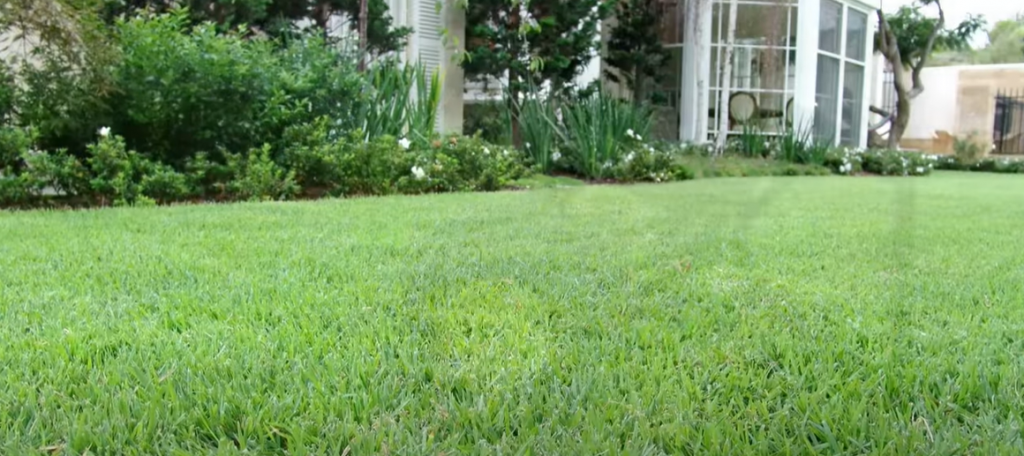
Fusarium Blight
Fusarium blight is one of the most common Zoysia grass problems. It is caused by a fungus that affects the leaves, stems, and crowns of the grass. Symptoms include yellowing or browning patches in the lawn, as well as white or gray-brown streaks on the leaf blades. Fusarium blight can be treated with fungicides if it is caught early enough. However, if left untreated, it can kill large sections of turfgrass quickly. To help prevent fusarium blight, cultural practices such as mowing higher and watering deeply but infrequently are recommended. In addition to these preventive measures, applying a fungicide at regular intervals may also be necessary to keep this disease under control in your lawn.
Crown Rot And Leaf Spot Disorder
Another common Zoysia grass problem is crown rot and leaf spot disorder. This fungal infection can cause reddish-brown spots on the leaves and stems, as well as yellowing of the leaf blades. In extreme cases, it can kill large sections of turfgrass quickly. To help prevent crown rot and leaf spot disorder, cultural practices such as mowing higher and removing dead or diseased foliage are recommended. Applying a fungicide at regular intervals may also be necessary to keep this disease under control in your lawn.
Dollar Spot
Dollar spot is another common Zoysia grass problem caused by a fungus. Symptoms include circular or oval-shaped patches of light tan or straw colored turf, with darker brown margins. This disease can be treated with fungicides if it is caught early enough. To help prevent dollar spot, cultural practices such as mowing higher and avoiding wetting the foliage during irrigation are recommended. In addition to these preventive measures, applying a fungicide at regular intervals may also be necessary to keep this disease under control in your lawn. [4]
Powdery Mildew
Powdery mildew is a common Zoysia grass problem that can cause discoloration and deformation of the leaves. Symptoms include yellow or white spots on the leaf blades, as well as powdery patches of white fungus growth. To help prevent powdery mildew, cultural practices such as mowing higher and avoiding wetting the foliage irrigation are recommended. Applying a fungicide at regular intervals may also be necessary to keep this disease under control in your lawn.
Fairy Rings
Fairy rings are another common Zoysia grass problem. This fungus can cause circular patches of dead or discolored turf, as well as white mushrooms that may appear in the affected area. To help prevent fairy rings, cultural practices such as mowing higher and avoiding wetting the foliage during irrigation are recommended. Applying a fungicide at regular intervals may also be necessary to keep this disease under control in your lawn.
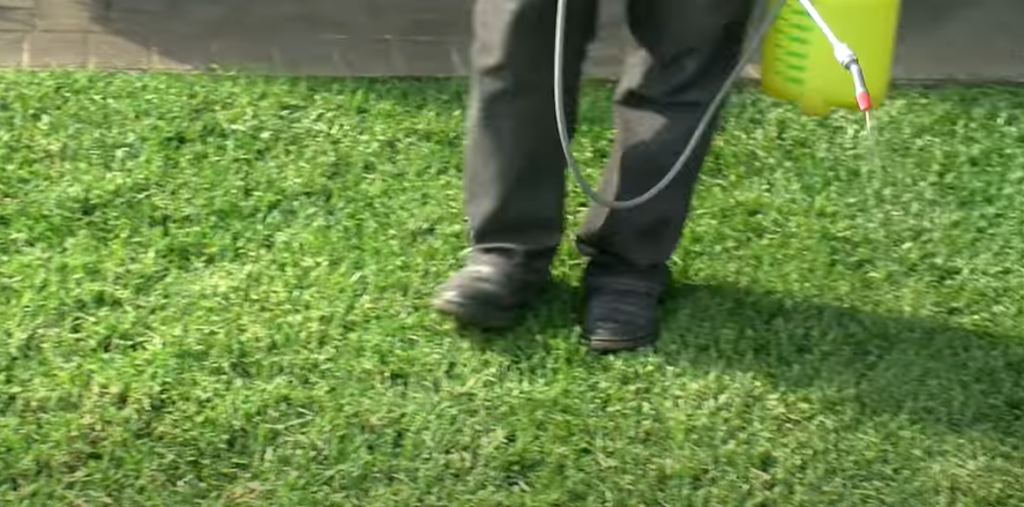
Pythium Blight
It is a common problem that affects Zoysia grass. The fungus thrives in moist, humid conditions and will cause the blades of grass to become discolored or matted together. Pythium Blight can be identified by its white, cottony growth on the tips of branches or patches of dead grass. It’s important to treat this issue quickly before it spreads and damages your lawn further. One treatment method is to apply a fungicide like Manzate Pro-Stick directly to the affected area. This helps stop the spread and encourages healthy new growth again.
Cool Weather Injury
Cool weather injury is another common problem affecting Zoysia grass. This occurs when the temperature drops below 55°F and frost appears on the tips of blades. As a result, they will yellow or brown in color and become limp instead of standing upright. To prevent this from happening, it’s important to make sure your lawn gets enough sunlight during the day and that you water it enough so that it stays hydrated. Additionally, using a winterizer fertilizer can help protect your grass from damage due to cold temperatures as well. [5]
Dry Slopes
Zoysia grass can also be affected by dry slopes. These occur when the soil is not able to retain enough moisture due to a lack of organic matter and poor drainage. As a result, the grass will become weak and discolored with brown patches appearing on it. The best way to prevent this is to ensure that your lawn has adequate water and fertilization so that the roots are able to absorb all the nutrients they need. Additionally, adding compost or an organic soil amendment can help improve the soil’s ability to hold moisture, leading to stronger growth over time.
Shade And Tree Competition
Zoysia grass can be affected by too much shade and competition from nearby trees. This can lead to weak growth and a decrease in the amount of healthy blades on your lawn. To prevent this, it’s important to make sure that your lawn gets enough sunlight each day and is not overshadowed by surrounding trees or structures.
Liming
Liming is another important factor to consider when maintaining your Zoysia grass. This process helps neutralize soil pH levels and make it more hospitable for plants. If you have acidic soil, liming can help improve the fertility of your lawn and encourage better growth. You should test your soil’s pH levels before applying lime or using a fertilizer as too much can be harmful to your lawn.
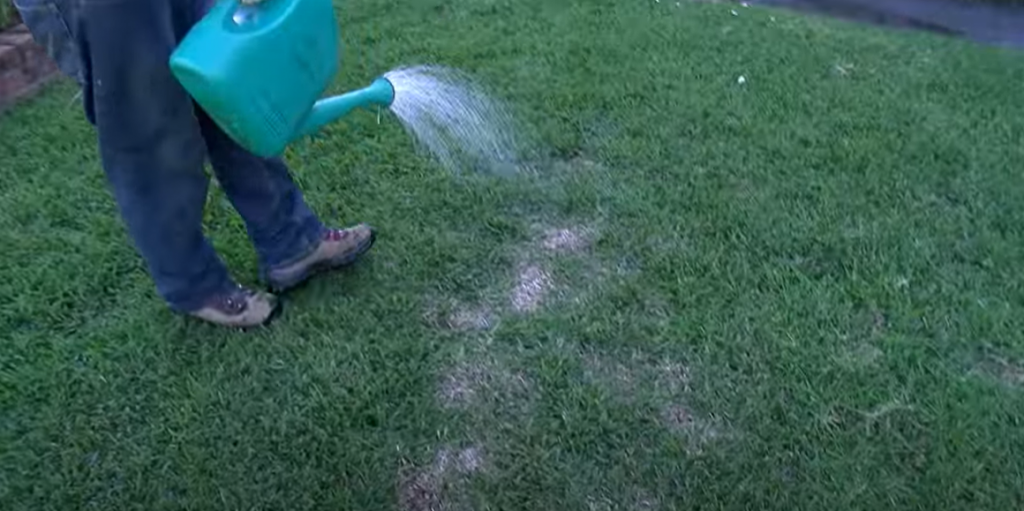
Heat And Drought Stress
Lastly, Zoysia grass is prone to heat and drought stress. This occurs when the temperature climbs too high or there is not enough water available for the roots to absorb. To prevent this from happening, it’s important to monitor your lawn’s soil moisture levels and make sure it gets adequate watering during periods of extreme heat or drought. Additionally, adding mulch or a thick layer of organic matter can help retain moisture and improve overall fertility.
By being aware of these common Zoysia grass problems and taking the necessary steps to address them, you can ensure that your lawn will remain healthy and looking its best all year round!
Is It Dead Or Just Dormant?
Sometimes, when Zoysia grass turns brown or yellow in the winter, people may think that it is dead and doesn’t have a chance of recovering. This isn’t necessarily true as Zoysia grass can go dormant during the colder months. When the temperatures rise again in spring and early summer, you should see some signs of life from your lawn. If you don’t, then it’s time to start worrying about potential problems.
If it continues to remain brown for too long after warmer weather has arrived, then there could be a number of causes behind why this is happening. One common cause could be disease or fungus that is attacking your Zoysia grass and killing off its roots. If this is the case, you may need to take action by treating your lawn with a fungicide and taking other steps to protect it from further damage.
Finally, poor drainage can also lead to brown patches of Zoysia grass. Soil that doesn’t drain properly can prevent oxygen and water from reaching the roots, leading to their death. To fix this problem, you can improve drainage by adding soil amendments or topdressing your lawn with organic material such as compost or sand.
No matter what’s causing your Zoysia grass to turn brown, it is important to take action quickly if you want to save it. Doing so will help ensure that your lawn looks its best and remains healthy for years to come. [6]
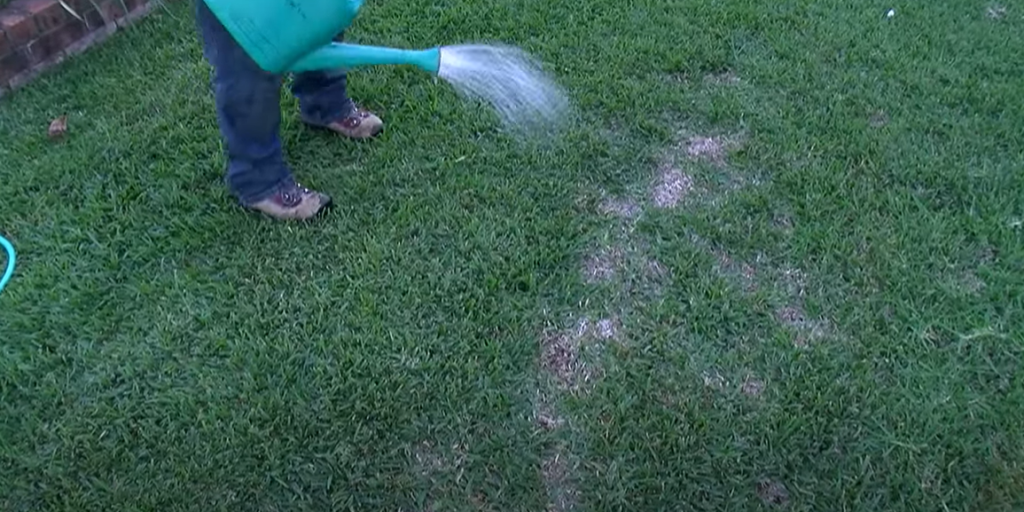
How To Repair Zoysia Grass?
The most common way to repair Zoysia grass is by overseeding. Overseeding involves spreading a thin layer of seed over the damaged grass to help fill in bald spots, brown patches, and other bare areas. It may take several weeks for the new grass to begin growing, but once it starts thriving you’ll have a lush lawn again in no time!
If there are larger areas of dead or dying turf that need more extensive repair, you can try sprigging or sod installation. Sprigging involves planting small pieces of mature zoysia grass over an area of dead turf. This is often the preferred method for repairing large lawns with patches of dead or dying grass because it helps speed up recovery time. Sod installation is an option for smaller areas of damage and involves laying down a pre-grown piece of zoysia turf. This can provide an instant lawn and requires minimal maintenance to get off the ground, but it’s often more expensive than overseeding or sprigging.
Regardless of which repair method you choose, make sure to fertilize your lawn properly and keep up with regular mowing in order to help maintain a healthy Zoysia grass lawn. With proper care and attention, your newly repaired turf should be back to its original beauty in no time!
Finally, it’s important to note that prevention is the best way to avoid having any Zoysia grass problems in the first place. Make sure to water your lawn regularly and follow a lawn care program specific for zoysia grass in order to keep it healthy from the beginning. With proper prevention and care, you’ll be able to enjoy a lush and green Zoysia grass lawn all year round!
FAQ
What is the problem with Zoysia grass?
Zoysia grass is susceptible to a variety of problems, including diseases, insects, and other environmental stressors. Common issues include brown patch or large patch disease, take-all root rot, Pythium blight, chinch bug infestations, drought or excessive water damage, and mowing or scalping damage. Proper maintenance practices and preventative measures can help reduce the likelihood of these problems occurring in Zoysia lawns.
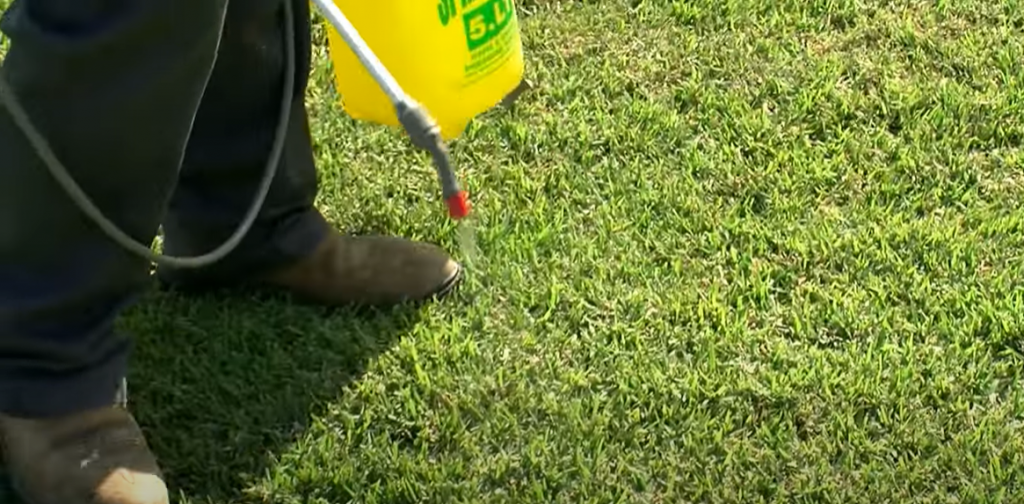
What is the best way to treat Zoysia grass for common problems?
The best way to treat Zoysia grass for common problems is by following proper maintenance practices that promote healthy plant growth. This includes watering deeply and regularly but not overwatering; fertilizing according to soil testing results; mowing at the right height; and removing thatch build-up. Additionally, preventative measures such as using fungicides and insecticides can help reduce the likelihood of diseases or infections occurring.
Are there any natural remedies for Zoysia grass problems?
Yes, there are several natural remedies for Zoysia grass problems. These include aerating to relieve compaction, topdressing with compost or other organic materials to improve soil health and drainage, mulching to retain moisture in the soil, and overseeding with disease-resistant cultivars. Additionally, proper cultural practices such as avoiding excessive foot traffic on the lawn or cutting back on fertilizer can also reduce stressors that could lead to common problems.
What causes zoysia grass to turn brown?
There are several possible causes of browning in zoysia grass, including a lack of water, too much fertilizer, disease, or insect damage. When the soil is too dry, the blades of grass will begin to yellow and then turn brown. Over-fertilization can cause a nutrient burn that will also turn the grass brown. Drought-like conditions can also lead to browning as well. Disease and insect damage can also result in patches of dead or dying zoysia grass. If you notice large patches of dead or dying grass in your lawn, inspect it for signs of fungal diseases or insects like chinch bugs. Properly identifying which issue is causing the issue is important for proper treatment and prevention in the future.
What does zoysia fungus look like?
Fungal diseases that affect zoysia grass often manifest in circular patches of dead or dying grass. These patches can range from a few inches to several feet in diameter and will be surrounded by healthy green grass. In some cases, the affected areas may have a thinning or matting of the blade texture as well as discoloration in shades of brown, yellow, orange, or tan. Additionally, white webs may form on the surface of the infected area if it is caused by a fungal disease like fairy ring or leaf spot. If you notice these signs, contact a professional for help identifying and treating the issue.
What should I do if my zoysia grass is turning brown?
If you’ve noticed brown patches in your zoysia grass, the first step is to identify the cause. Check for signs of disease, insect damage, or nutrient burn from over-fertilization. If you’re not sure what’s causing the issue, contact a professional for help. Once you’ve identified why your zoysia grass is turning brown, take action to address the problem. This may include watering more frequently in periods of drought or reducing fertilizer application if there has been too much. Additionally, proper treatment of any diseases or insect infestations will be necessary to get the grass back to its former health and beauty.
What are the black spots on Zoysia grass?
The black spots that are sometimes seen on zoysia grass are likely caused by a fungus. This is usually due to an accumulation of fungal spores in the soil which can form circular patches of dead or dying grass. These spots may be surrounded by healthy green blades and will often have discoloration ranging from brown, yellow, orange, or tan. Additionally, white webs may form on the surface of the infected area if it is caused by a fungal disease like fairy ring or leaf spot. If you notice these signs, contact a professional for help identifying and treating the issue.
Useful Video: Empire Zoysia Turf | QLD’s Michael Hagan Shows How To Look After Your Empire Lawn
Conclusion
In conclusion, Zoysia grass is an excellent choice for a low-maintenance lawn. Despite its many benefits, however, it does have some drawbacks, and ultimately the decision to plant it comes down to weighing those pros and cons against your desired outcome. If you are willing to put in the effort to maintain your lawn and address any issues as they arise, then Zoysia grass may be the perfect option for you. Otherwise, there may be other more suitable options available. Ultimately, careful consideration must be given before deciding on which type of grass is best suited for your needs.
No matter what kind of grass you decide upon though, regular care will always yield better results than neglect; this is especially true when it comes to preventing common Zoysia grass problems. By following the recommended guidelines, your lawn can remain healthy and vibrant for years to come. So don’t be afraid to give Zoysia grass a try – you may just find that it was exactly what your lawn needed!
Take care of your Zoysia grass and it will take care of you.
Happy gardening!
References:
- https://lawnlove.com/blog/common-diseases-affecting-zoysiagrass/
- https://www.gardeningknowhow.com/lawn-care/specific/zoysia/zoysia-diseases-tips-for-dealing-with-zoysia-grass-problems.htm
- https://www.missouribotanicalgarden.org/gardens-gardening/your-garden/help-for-the-home-gardener/advice-tips-resources/visual-guides/lawn-problems-zoysia
- https://www.happysprout.com/gardening/zoysia-grass-problems/
- https://gardenerdy.com/common-zoysia-grass-diseases/
- https://homeguides.sfgate.com/problems-zoysia-grass-69052.html

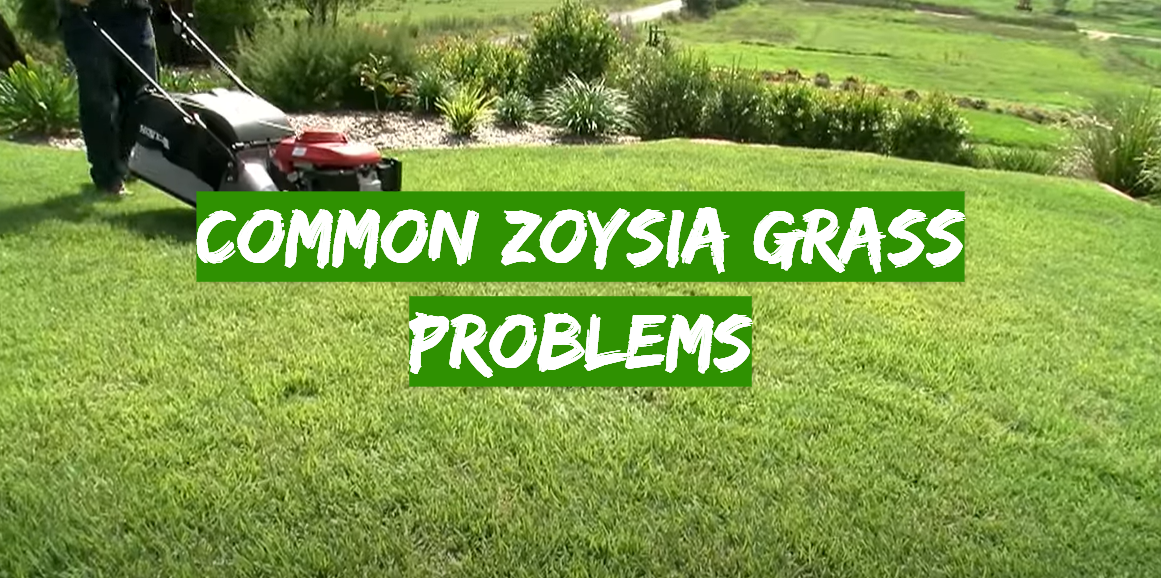


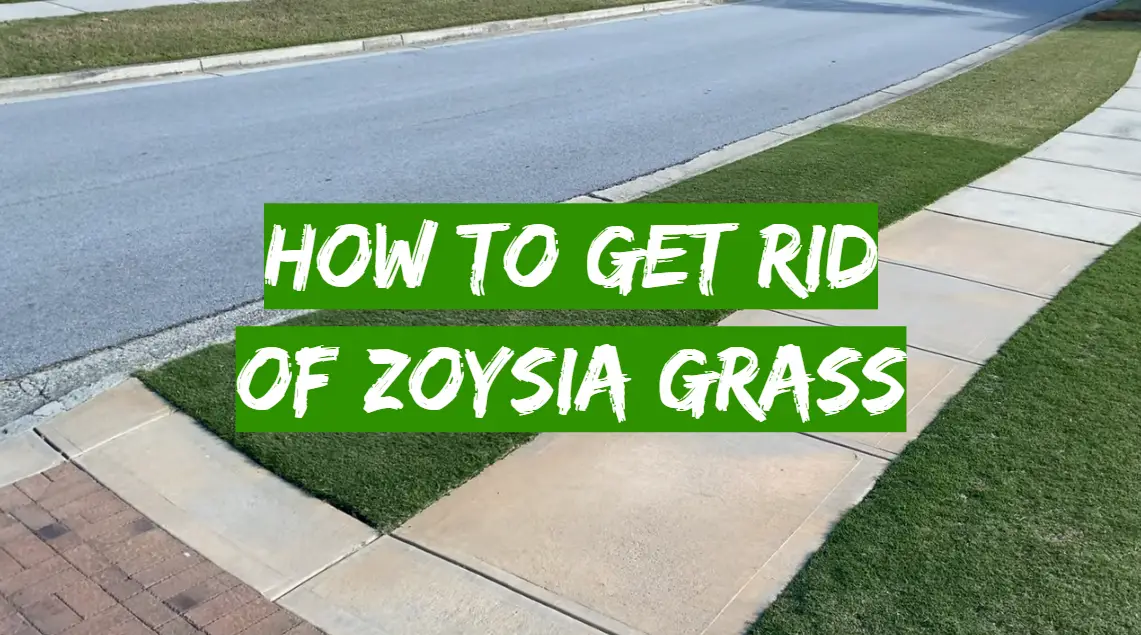
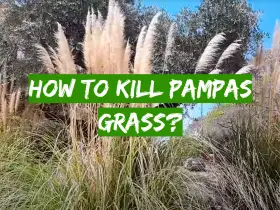

Leave a Reply
View Comments